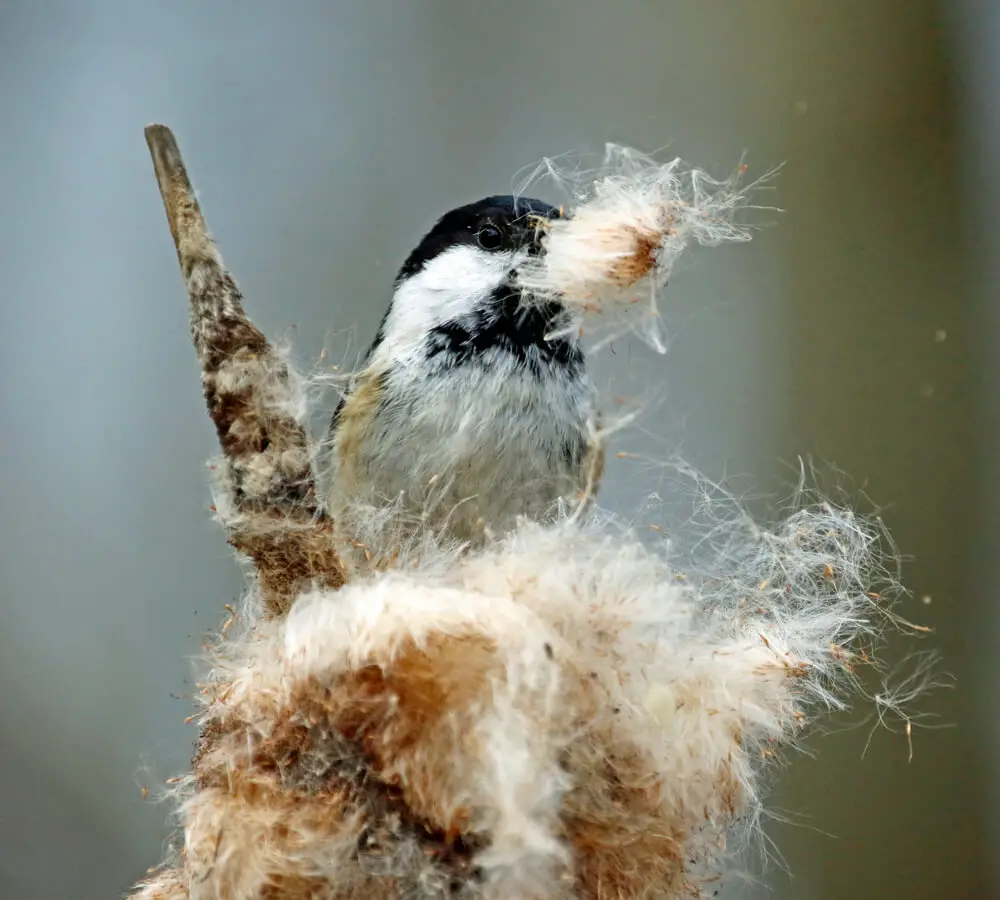If you’re a regular garden bird feeder, you have probably been visited by the coal tit. They are common across all of the UK and Ireland; there are 600,000 breeding pairs.
They are one of the smallest members of the tit family and easily overlooked, if not for their loud, repetitive song – “teachoo-teachoo-teachoo”
If you can’t spot any, follow the call to find out where coal tits nest.
Coal tits love conifers; they are an excellent food source and a secure place to build their nests. However, the birds also make their nests in holes in deciduous trees, walls, or grassy banks – providing they feel safe.
Coal tits use garden nesting boxes, but only if they can get there before any larger birds; great tits are their closest rivals.

Table of Contents
Where do coal tits nest?
The coal tit is common wherever there are conifers; pretty much all of the UK except for distant Scottish Isles and Anglia. They even successfully inhabit mountainous regions.
The coal tit prefers coniferous woodland but will also build their nests in mixed woods, parks, and large gardens.
They are cavity nesters and use natural holes in tree trunks, walls, or banks in the ground. The female works alone, tightly packing the space moss, spider’s webs, and wool if she can find any.
She adds a lining of hair and feathers to provide comfort and warmth.
Do coal tits use bird boxes?
All members of the tit family are happy to use a bird box, including the coal tit.
The only issue they face is their diminutive size – they weigh just 8-10g. If a bigger bird decides it wants the box, it has no difficulty fighting off the coal tit.
Great and blue tits are dominant and renowned for bullying them out of the way.
One way to prevent this is to use a nesting box with a vertical slit instead of a round entrance hole.
Coal tits can flit in and out with ease; larger birds, not so much.
Where to put a nesting box for a coal tit
In the wild, coal tits favour coniferous woodland, so it seems the best place to install a bird box is on a conifer- their beaks are adapted to feed best here. Other members of the conifer family include pine, spruce, fir, and larch trees.
Coal tits will nest in deciduous trees, but their first choice will be coniferous.
They naturally build their nests mid-way up a trunk, so you should replicate this by attaching the box at least 2m from the ground. If you’re fitting several boxes, try to keep them between 2m and 4m apart and face them northeast. Not only will it protect them from heat and direct sunlight, but also offer protection from any rain coming in from the west.
Place the nest box within range of a feeding station; coal tits will use a table and hanging feeders. They enjoy peanuts, suet, mixed seed, and mealworms.
When to look for a coal tit nest
It is difficult to spot a coal tit’s nest; they are built-in cavities, often deep inside a tree trunk. The best thing to do is keep a lookout for the female making multiple return journeys on the lookout for building materials.
Early April is when construction begins, and by mid-April, she may be incubating her eggs. It is then time to spot the male; he makes dozens of trips each day, foraging for food to feed his partner and their chicks.
There are many hungry mouths to satisfy; coal tit’s clutches contain 7-12 eggs, and they often attempt 2-broods per year.
Final thoughts
Coal tits are widespread across almost all of Britain; the little birds are often spotted near coniferous and deciduous woodland.
They are friendly, don’t scare easily, and regular visitors to feeding tables. For these reasons, coal tits build their nests in gardens with trees, as well as parks and farmland.
